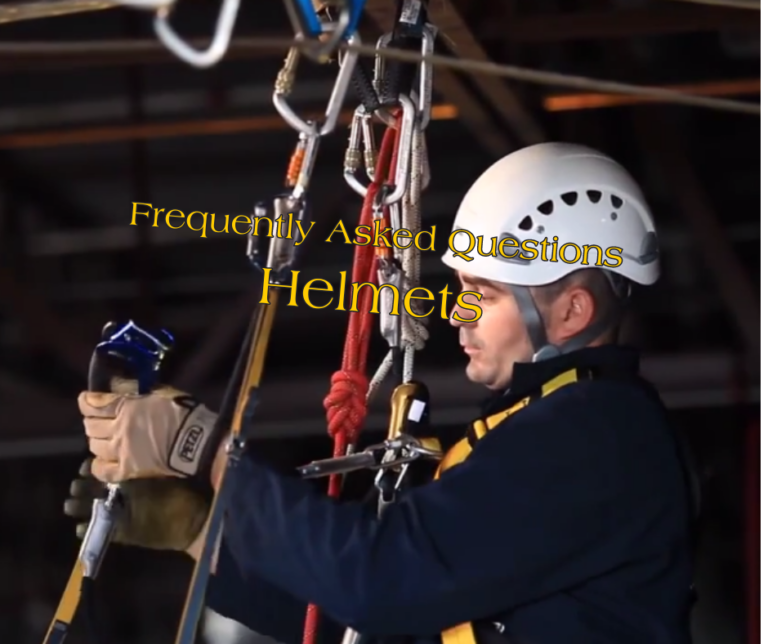Selecting the Right Helmet for Technical Rope Rescue
In the high-stakes world of technical rope rescue, a helmet is more than just a piece of gear—it’s a vital tool for ensuring safety and enabling effective operations. However, there isn’t a single helmet that suits every rescue scenario. Choosing the right helmet requires careful consideration of the rescue environment, agency requirements, and the specific hazards likely to be encountered.
This article explores the critical features, certifications, and considerations for selecting helmets designed for technical rope rescue operations.
The Role of Helmets in Rope Rescue
Helmets for technical rope rescue are uniquely engineered to provide protection in scenarios where head injuries are a significant risk. Unlike general-purpose helmets used in construction or outdoor climbing, rescue helmets must meet specialized standards and integrate seamlessly with other rescue gear.
Key Differences in Technical Rope Rescue Helmets:
- Side Impact Protection: Unlike climbing helmets, which primarily protect against top impact, rescue helmets often include side impact protection for greater coverage.
- Communication Device Compatibility: Many rescue helmets feature built-in mounts or adapters for radios and headsets, enabling clear communication in critical situations.
- Headlamp Integration: Rescue operations frequently occur in low-light environments, so helmets designed for technical rescue often include secure headlamp attachment systems.
- Specific Certifications: Certifications like UIAA 106, EN 12492, or NFPA 1951-2007 ensure helmets meet the stringent safety standards required for rope rescue.
Certifications and Safety Standards
To ensure a helmet meets the demands of technical rope rescue, it’s essential to verify its compliance with recognized safety standards:
- UIAA 106 (International Climbing and Mountaineering Federation): This standard focuses on impact protection and strap strength, ensuring the helmet can withstand high-force impacts.
- EN 12492 (European Standard for Mountaineering Equipment): Covers impact resistance, chinstrap retention, and stability for helmets used in vertical environments.
- NFPA 1951-2007 (National Fire Protection Association): Applies to helmets used in urban search and rescue, ensuring protection against debris and environmental hazards.
Regular inspection of the helmet for damage or signs of wear is crucial. Follow manufacturer guidelines for maintenance to maintain compliance with safety standards and prolong the helmet’s lifespan.
Key Features to Consider in Rescue Helmets
1. Protection Type
- Type I Helmets: Designed for top impact protection, suitable for environments with overhead hazards.
- Type II Helmets: Provide both top and side impact protection, ideal for dynamic rescue scenarios.
2. Electrical Protection Class
- Class G (General): Protects against low-voltage electrical hazards.
- Class E (Electrical): Provides high-level electrical protection.
- Class C (Conductive): Offers no electrical protection but maximizes ventilation and comfort.
3. Ventilation Options
- Helmets with adjustable ventilation systems help regulate temperature during extended operations.
4. Compatibility with Other Equipment
- Helmets must integrate seamlessly with headlamps, hearing protection, and other personal protective equipment (PPE).
5. Durability and Impact Resistance
- Look for helmets made from high-impact materials like ABS plastic or polycarbonate to withstand rigorous use.
6. Comfort and Fit
- A helmet must fit securely without causing discomfort during prolonged wear. Adjustable straps and padding enhance stability and comfort.
Special Considerations for Rescue Environments
Each rescue scenario presents unique challenges, and helmets must align with the specific environment:
- Confined Spaces: Opt for helmets with low profiles to navigate tight areas without compromising protection.
- Wet Environments: Ensure helmets have water-resistant materials and corrosion-resistant hardware.
- Extreme Temperatures: Choose helmets tested for performance in high or low-temperature conditions.
Why Specialized Helmets are Essential
While helmets designed for climbing or general outdoor activities may provide some protection, they often lack the features and certifications required for technical rope rescue. Specialized rescue helmets address hazards such as lateral impacts, falling debris, and integration with essential equipment, ensuring the highest level of protection for rescue personnel.
Conclusion: Making the Right Choice
Selecting the right helmet for technical rope rescue requires balancing protection, comfort, and compatibility. By focusing on certifications, durability, and the specific demands of your rescue environment, you can ensure your helmet meets the highest safety standards.
For comprehensive training and insights into technical rope rescue equipment, visit Rigging Lab Academy. Explore certified helmets and other essential gear at Rescue Response Gear to equip your team with tools you can trust.
Peace on your days,
Lance









